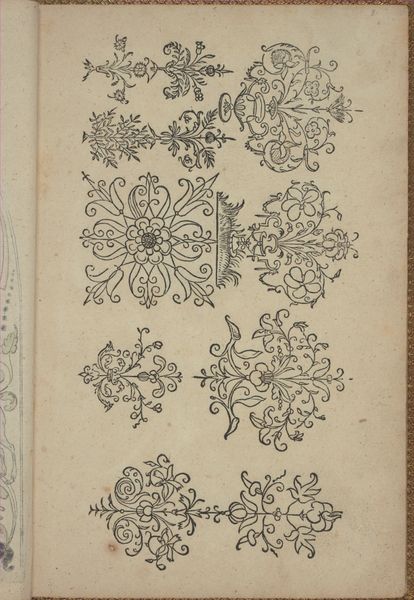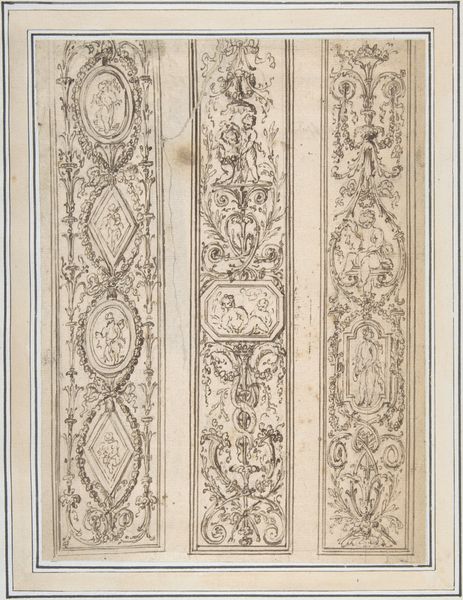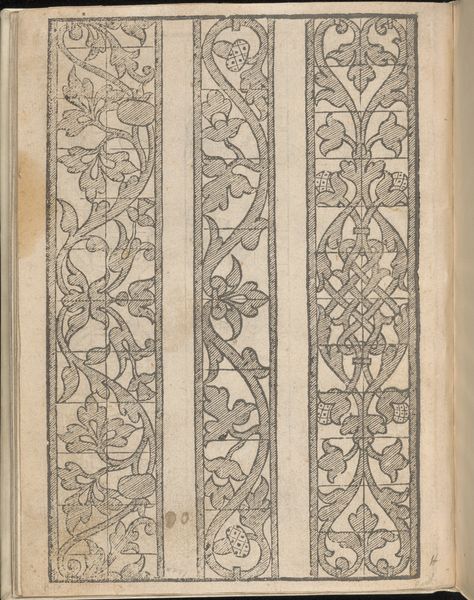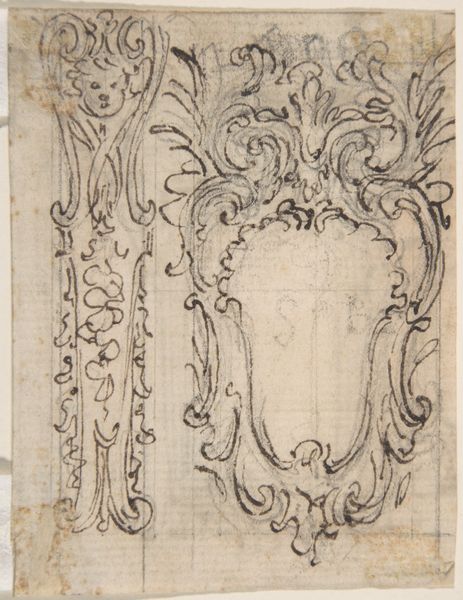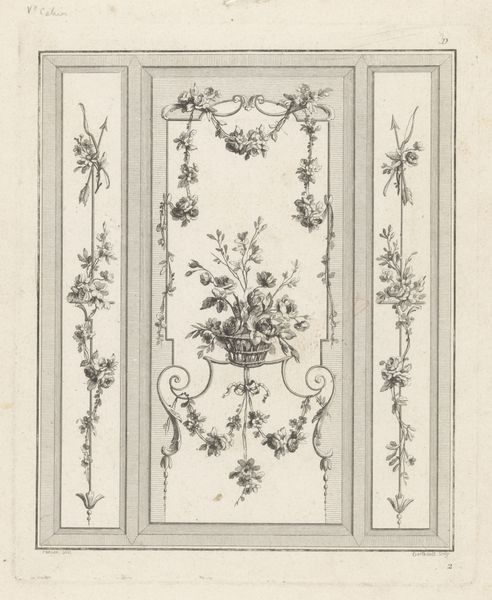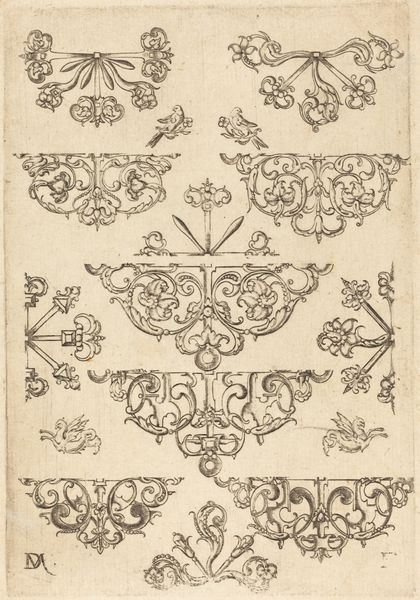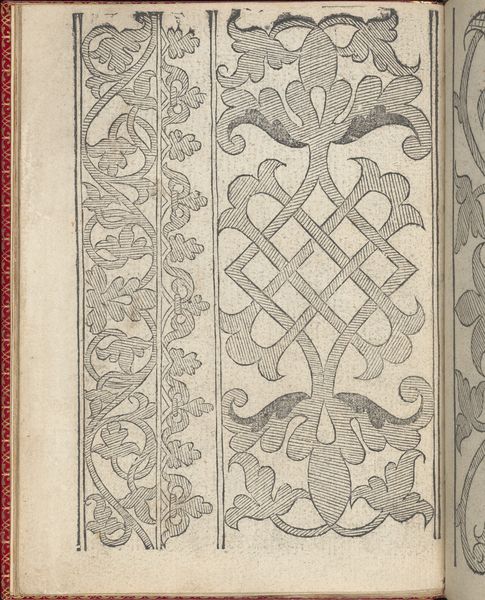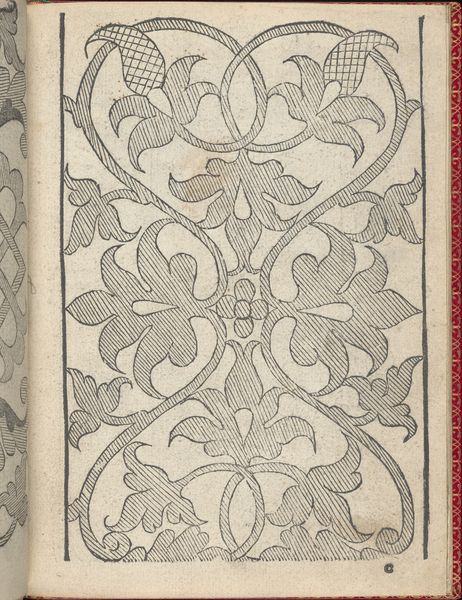
drawing, print, paper, ink
#
drawing
# print
#
paper
#
ink
#
history-painting
#
northern-renaissance
Dimensions: Overall: 12 x 8 1/16 in. (30.5 x 20.5 cm)
Copyright: Public Domain
Editor: Here we have “New Modelbüch (Page 48v),” a print and drawing in ink on paper from 1615, created by Andreas Bretschneider. I’m really drawn to the symmetry of the design and the intricacy of the floral and decorative elements. What do you see in this piece? Curator: The linear precision is noteworthy, isn't it? Observe the deployment of negative space – the emptiness between the lines becomes almost as important as the lines themselves. Note the rhythmic repetition of motifs, creating a structural harmony that is quite deliberate. How does that harmony speak to you? Editor: I hadn't really thought about the negative space before, but now I see how it enhances the design. The balance feels very intentional. So, would you say the lack of color contributes to this focus on form and structure? Curator: Precisely. The absence of color allows us to engage directly with the formal relationships at play: the counterpoint between curved and straight lines, the progression from simple to complex forms, the overall impression of controlled elegance. It demands a close reading of its composition. Editor: It’s interesting to see the artistry within the constraints of a model book page. It makes me appreciate the intentionality behind even the most functional art. Curator: Yes, and consider how the printmaking aspect, in its mechanical reproducibility, influences the concept of artistic creation and value. What have you gleaned about how seemingly rigid structural choices impact the viewer’s experience of an image? Editor: I've learned that the focus on form allows for a deeper exploration of balance, harmony, and intention within a work. Thanks! Curator: And I, in turn, am reminded of the capacity for line and form to speak volumes. Thank you for your insightful questions!
Comments
No comments
Be the first to comment and join the conversation on the ultimate creative platform.

